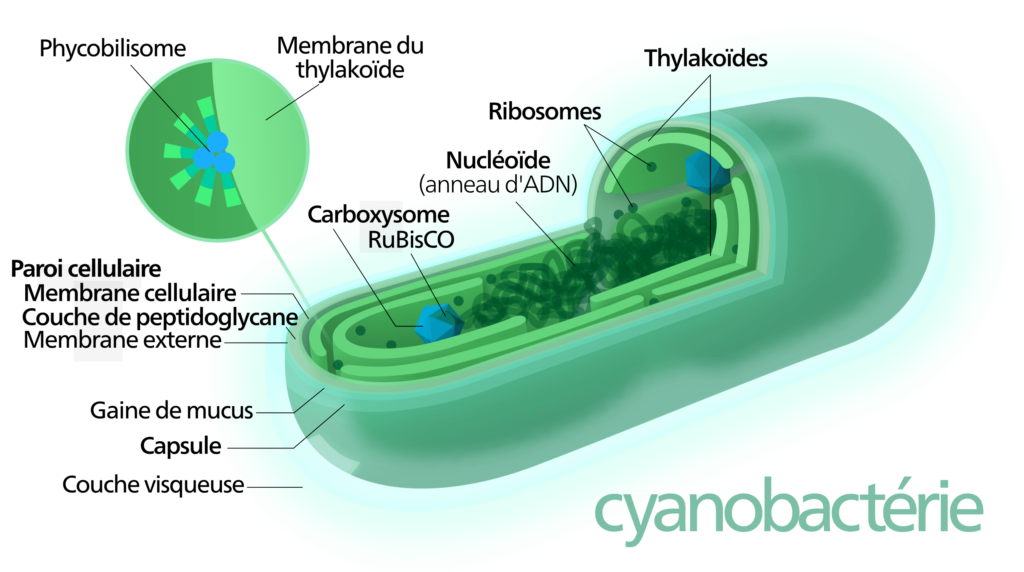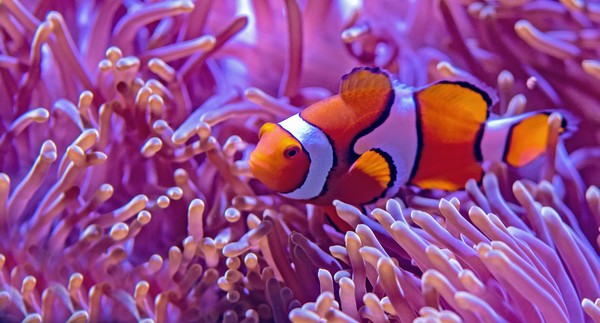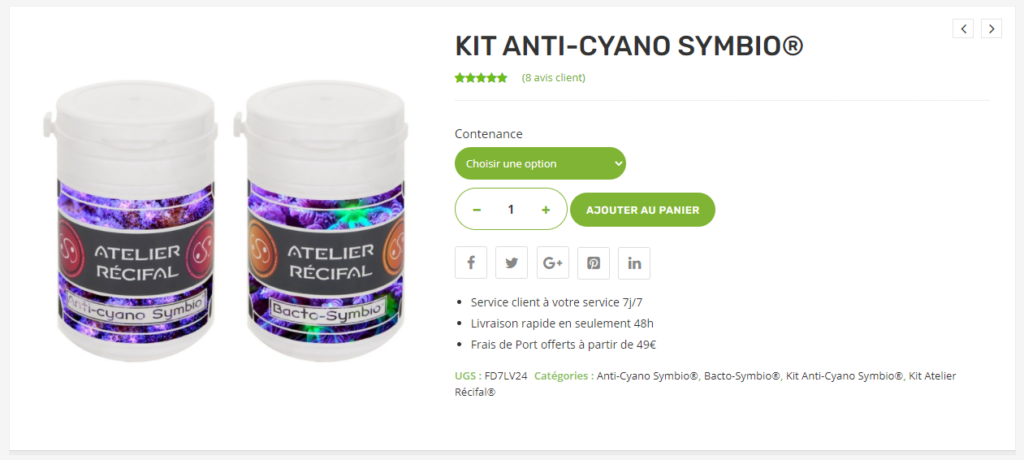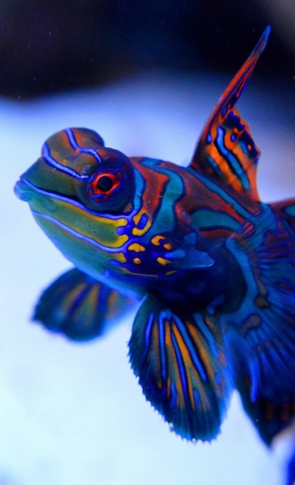What is Cyanobacteria in a Reef Tank?
Cyanobacteria is a phylum of prokaryotic bacteria (single-celled microorganisms whose structure does not contain a nucleus), which can become a real nuisance in a reef environment. Photosynthetic, cyanobacteria primarily feeds on light and nitrogen, corresponding to dissolved organic matter. In the form of slimy red algal mats, it has a strong proliferation capacity, which makes its elimination very difficult. Cyanobacteria can quickly prove dangerous for your tank and its inhabitants, suffocating your corals and releasing toxins potentially deadly to your invertebrates and fish. Discover, through this article, the origins of cyanobacteria, the causes of its proliferation, as well as the different methods to eliminate it from your reef aquarium.

Cyanobacteria Diagram, created by Kelvinsong.
Where Does it Come from?
The causes of cyanobacteria appearance and proliferation in a reef aquarium can be numerous. Here is a list of good practices to adopt to prevent cyanobacteria from appearing and spreading in your tank.
- Make sure not to use overly enriched salt. Using enriched salt for your saltwater changes is potentially a good idea to maintain biologically balanced levels of fundamental elements and trace element rates suitable for corals. However, overly enriched salt promotes the appearance and growth of cyanobacteria, which feeds on its nutrients.
- Ensure sufficient flow in your aquarium. Flow in a reef aquarium is very important and must absolutely not be neglected, so as not to promote the appearance or expansion of cyanobacteria. It is advisable to circulate between 30 and 40 times the volume of your tank per hour. Make sure to distribute the flow well in all areas of your aquarium.
- Check the No3/Po4 levels in your aquarium water. Maintaining balanced nitrate and phosphate levels in a reef aquarium is essential to avoid being overrun by cyanobacteria. As excellent nutrient sources for cyanobacteria, No3/Po4 must be regulated to stop its progression and expansion. Don’t hesitate to check out our blog article dedicated to nitrate and phosphate regulation, by clicking here.
- Use appropriate lighting for your tank. Lighting plays an important role in the appearance and proliferation of cyanobacteria in a reef environment. As you read above, cyanobacteria is a phylum of prokaryotic bacteria (photosynthetic single-celled microorganisms), which means it feeds on light to develop. Therefore, it is important to use lighting adapted to your tank and not to under- or over-light it.
- Check the quality of your RO water. It is important to check that the RO water used for water changes and evaporation top-off does not contain any nitrates/phosphates and is also free of silicate. Don’t hesitate to test these levels directly on your RO water.
- Use appropriate food for your livestock. Using quality food and not overfeeding a reef aquarium is fundamental so as not to provide an additional nutrient source for cyanobacteria. Feed your fish and crustaceans in multiple small portions, and don’t forget, if you opt for frozen food, to rinse it well to limit the phosphate input into your tank.
- Choose an appropriate skimmer for your aquarium. The skimmer is one of the most important points to prevent the appearance or development of cyanobacteria. Sufficiently powerful skimming of your aquarium will allow you to eliminate organic matter before it transforms into nitrates and phosphates present in the water, thus depriving cyanobacteria of this nutrient source.
Too much Cyanobacteria in your Tank? What are the Risks?
Sometimes called “red slime,” cyanobacteria represents significant visual pollution and can have serious consequences for your reef aquarium and its inhabitants. Here are the four main problems encountered with cyanobacteria in a reef environment:
- Significant visual pollution. The presence of cyanobacteria in a reef aquarium represents a significant source of visual pollution. Wrongly giving your tank a dirty and poorly maintained appearance, cyanobacteria reveals itself in the unappealing form of slimy red algal mats. As a passionate aquarist, it will become increasingly difficult for you to admire your reef aquarium without focusing on the cyanobacteria present in it.
- Sustained and exponential growth. Cyanobacteria is a bacterium that, in a reef environment, has the ability to be resistant and very invasive. Once present in your tank, it will quickly develop and cover sand, live rock, and corals in a short time.
- Coral Suffocation and RTN. Cyanobacteria is a bacterium that has the particularity of possessing a large number of filaments, which have the effect of capturing particles and organic matter from your water. Once present on corals, cyanobacteria will therefore locally release a very high dose of phosphates, deadly to corals. Under stress, corals will then develop rapid tissue necrosis, also called RTN (a highly contagious disease in which coral tissue detaches from the coral skeleton).
- Release of potentially deadly toxins. As seen previously, cyanobacteria filaments capture organic matter and other pollutants from your aquarium, which gradually transform into phosphates that are released into the tank. In parallel, cyanobacteria develops its own toxin composed of synthesized metabolites, called cyanotoxin. Slowing coral growth, cyanotoxin also represents a significant physiological risk, particularly concerning osmoregulation (the ability of marine living organisms to regulate internal fluids), for your fish and crustaceans.
How to Eliminate Cyanobacteria from your Reef Aquarium?
Anti-Cyano Symbio® is a product composed of a unique formula of 7 marine bacterial strains, associated with a set of bio-enzymes and living microorganisms, specially selected for their ability to trigger the biological elimination process of cyanobacteria present in your reef aquarium. An effective, natural, and safe solution for your tank and its inhabitants, Anti-Cyano Symbio® directly targets the base of cyanobacteria, the prokaryotes, and not its surface, thus guaranteeing a complete and lasting action.


